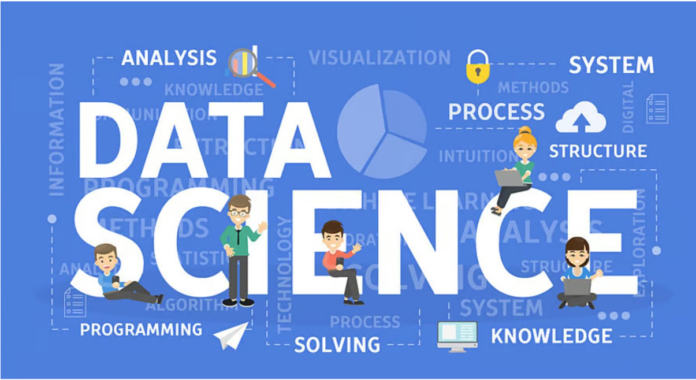Sequence prediction tasks, such as language modelling, machine translation, and time series forecasting, have traditionally relied on recurrent neural networks (RNNs) and their variants, such as LSTMs and GRUs. However, the advent of transformer models has revolutionised this field by offering superior performance and scalability. This blog post provides an overview of the architecture of transformer models and their applications in sequence prediction tasks. Read on for a formal acquaintance with transformer models before you enrol for a Data Science Course that covers this topic in detail.
What Are Transformer Models?
Transformer models, introduced in the paper “Attention is All You Need” by Vaswani et al. in 2017, are a type of deep learning model designed to handle sequential data with greater efficiency and effectiveness compared to RNNs. The key innovation in transformers is the self-attention mechanism, which allows the model to weigh the importance of different elements in a sequence, regardless of their distance from each other.
Key Components of Transformer Models
Some basic features that constitute transformer models are described here. Ensure that the Data Science Course you will enrol in will expose the constitution of transformer models in detail because you must be fully conversant with what transformer models are to understand their usage, which will be taught in more advanced topics.
- Self-Attention Mechanism: This allows the model to focus on different parts of the input sequence when generating an output, giving it the ability to capture long-range dependencies.
- Positional Encoding: Since transformers do not have a built-in notion of sequence order like RNNs, positional encodings are added to the input embeddings to give the model information about the position of each token in the sequence.
- Multi-Head Attention: This extends the self-attention mechanism by allowing the model to jointly attend to information from different representation subspaces at different positions.
- Feed-Forward Neural Networks: Each position in the sequence is passed through the same fully connected feed-forward network.
- Layer Normalisation and Residual Connections: These help stabilise training and allow for deeper networks by mitigating issues like vanishing and exploding gradients.
Transformer Architecture
A transformer model consists of an encoder and a decoder, each made up of a stack of identical layers.
Encoder
Each layer in the encoder has two sub-layers:
- Multi-Head Self-Attention Mechanism: This allows the model to attend to different parts of the sequence simultaneously.
- Feed-Forward Neural Network: This applies non-linear transformations to the output of the attention mechanism.
Decoder
The decoder layers also have two sub-layers similar to the encoder, with an additional third sub-layer:
- Masked Multi-Head Self-Attention Mechanism: This ensures that predictions for a position can depend only on the known outputs at positions before it.
- Multi-Head Attention over Encoder Outputs: This allows the decoder to attend to relevant parts of the input sequence.
- Feed-Forward Neural Network: This applies non-linear transformations to the output of the attention mechanism.
Applications of Transformer Models
A standard, practice-oriented Data Science Course in Chennai, Mumbai, or Bangalore that has coverage on transformer modelling will most probably explain the following leading applications of transformer models.
- Language Modelling: Transformers have set new benchmarks in tasks such as next-word prediction and sentence completion, with models like GPT (Generative Pre-trained Transformer) and BERT (Bidirectional Encoder Representations from Transformers).
- Machine Translation: Transformers are the backbone of models like Google’s BERT and OpenAI’s GPT-3, which have achieved state-of-the-art results in translating between languages.
- Text Summarisation: Models like T5 (Text-To-Text Transfer Transformer) leverage transformers to generate concise summaries of long documents.
- Time Series Forecasting: Transformers are being adapted for predicting future values in time series data, providing advantages in capturing long-range dependencies and patterns.
- Speech Recognition: Transformers are used in end-to-end speech recognition systems, significantly improving accuracy and performance.
- Image Processing: Vision Transformers (ViTs) apply transformer architecture to image classification tasks, demonstrating competitive performance with convolutional neural networks (CNNs).
Benefits of Transformer Models
Here are some key benefits of the transformer modelling technique.
- Parallelisation: Unlike RNNs, transformers do not require sequential processing of the input, enabling more efficient parallelisation and faster training.
- Long-Range Dependencies: The self-attention mechanism allows transformers to capture dependencies regardless of their distance in the sequence, which is challenging for RNNs.
- Scalability: Transformers scale well with increasing data and model sizes, as demonstrated by models like GPT-3 with billions of parameters.
Challenges and Future Directions
Data scientists and researchers need to be aware of the challenges involved in transformer modelling and work on how these can be addressed. The positioning of this technology for the future must be in focus while evolving innovations. Thus, researchers and scientists who are attending a Data Science Course need to pay attention to the following aspects of transformer modelling.
- Computational Complexity: Transformers require significant computational resources, especially for large models, which can be a barrier for some applications.
- Data Efficiency: Large transformers need vast amounts of training data to perform well, which may not be available in all domains.
- Interpretability: Understanding the internal workings and decisions of transformer models can be challenging due to their complexity.
Conclusion
Transformer models have transformed the landscape of sequence prediction tasks, offering unprecedented accuracy and efficiency. Their ability to handle long-range dependencies, coupled with their scalable architecture, makes them a powerful tool for a wide range of applications, from natural language processing to time series forecasting. As research continues to advance, we can expect to see even more innovative applications and enhancements in transformer models, further solidifying their role in the future of machine learning.
By understanding and leveraging the capabilities of transformers, data scientists and machine learning practitioners can develop state-of-the-art solutions for complex sequence prediction problems, pushing the boundaries of what is possible in the field of artificial intelligence. Learning centres in cities that are technical hubs, offer quality learning in which such emerging technologies are covered. Thus, enrol for a Data Science Course in Chennai, Mumbai, or Bangalore to explore the possibilities this technology holds for the future.
BUSINESS DETAILS:
NAME: ExcelR- Data Science, Data Analyst, Business Analyst Course Training Chennai
ADDRESS: 857, Poonamallee High Rd, Kilpauk, Chennai, Tamil Nadu 600010
Phone: 8591364838
Email- enquiry@excelr.com
WORKING HOURS: MON-SAT [10AM-7PM]

